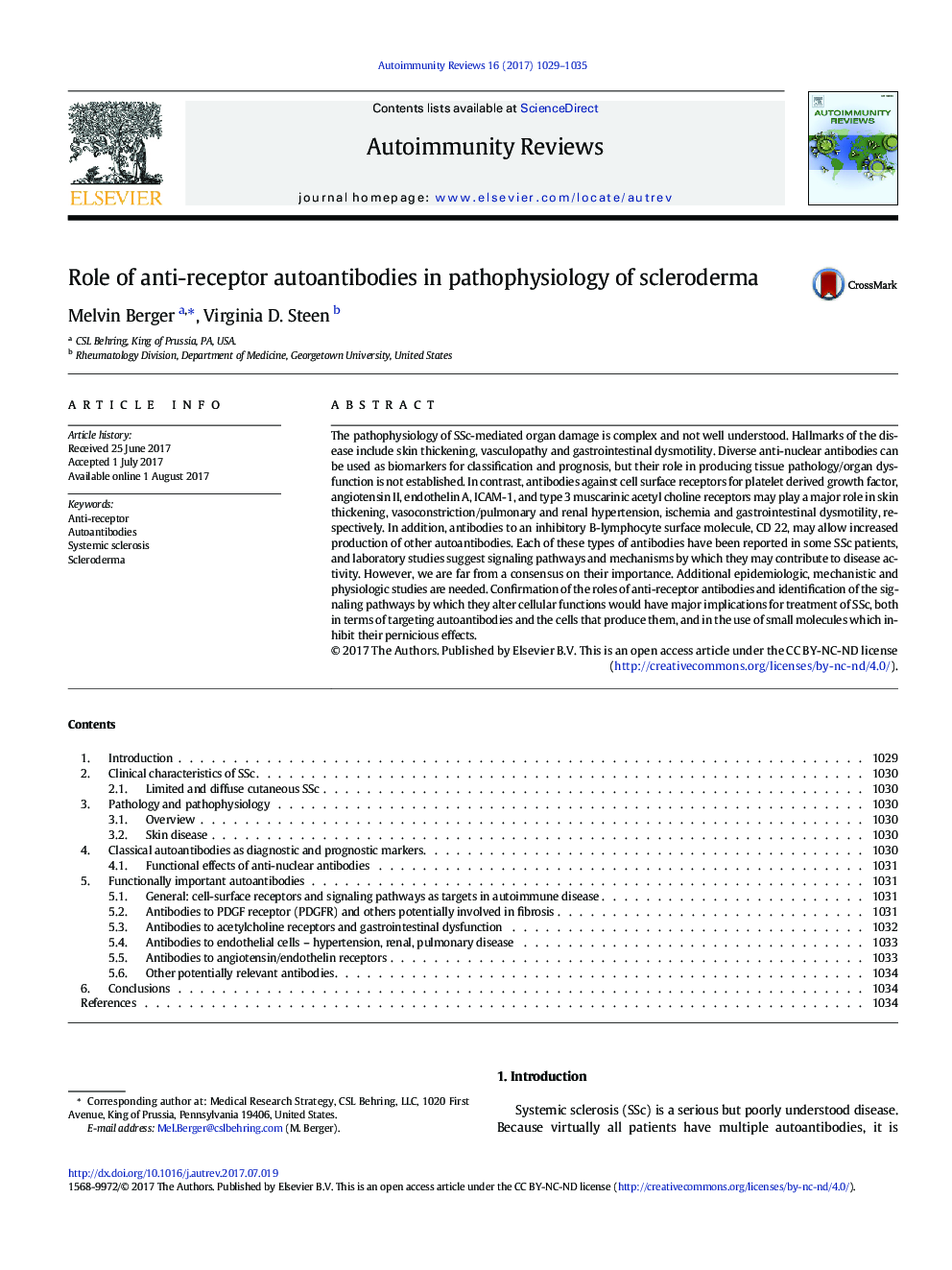| کد مقاله | کد نشریه | سال انتشار | مقاله انگلیسی | نسخه تمام متن |
|---|---|---|---|---|
| 5665345 | 1591145 | 2017 | 7 صفحه PDF | دانلود رایگان |
- Antinuclear antibodies are common in SSc, but their role in pathology is unclear.
- Anti-receptor antibodies may be involved in many disease manifestations.
- Therapy to reduce anti-receptor antibodies may be beneficial and should be studied.
The pathophysiology of SSc-mediated organ damage is complex and not well understood. Hallmarks of the disease include skin thickening, vasculopathy and gastrointestinal dysmotility. Diverse anti-nuclear antibodies can be used as biomarkers for classification and prognosis, but their role in producing tissue pathology/organ dysfunction is not established. In contrast, antibodies against cell surface receptors for platelet derived growth factor, angiotensin II, endothelin A, ICAM-1, and type 3 muscarinic acetyl choline receptors may play a major role in skin thickening, vasoconstriction/pulmonary and renal hypertension, ischemia and gastrointestinal dysmotility, respectively. In addition, antibodies to an inhibitory B-lymphocyte surface molecule, CD 22, may allow increased production of other autoantibodies. Each of these types of antibodies have been reported in some SSc patients, and laboratory studies suggest signaling pathways and mechanisms by which they may contribute to disease activity. However, we are far from a consensus on their importance. Additional epidemiologic, mechanistic and physiologic studies are needed. Confirmation of the roles of anti-receptor antibodies and identification of the signaling pathways by which they alter cellular functions would have major implications for treatment of SSc, both in terms of targeting autoantibodies and the cells that produce them, and in the use of small molecules which inhibit their pernicious effects.
Journal: Autoimmunity Reviews - Volume 16, Issue 10, October 2017, Pages 1029-1035
